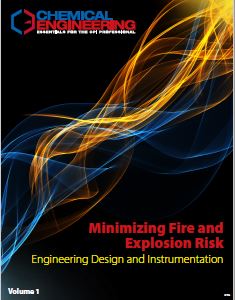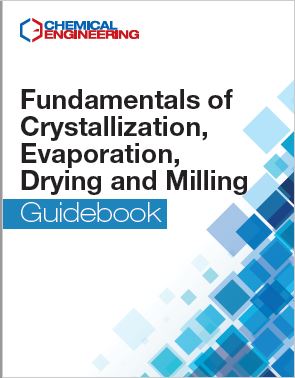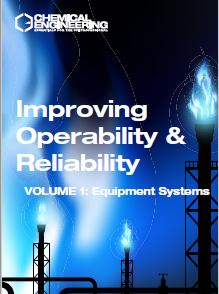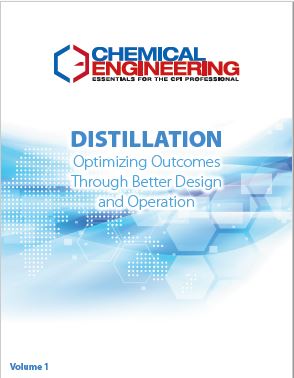Description
The risk of fire and explosion is ever present at facilities throughout the Chemical Process Industries (CPI). These include plants that handle fuels and chemicals, flammable and potentially explosive fluids, and combustible dry powders. To help mitigate risk, plant personnel must implement the most appropriate engineering designs and instrumentation-and-control systems, and operate them properly. The goal is to ensure maximum reliability and rapid response (in terms of shutdown, isolation of the accelerant, protection of assets and personnel and more) in the event of fire or explosion.
This Chemical Engineering Guidebook provides a collection of practical engineering articles to help facilities maximize safety and minimize the risk of fire and related damage to the facility and personnel.
This volume includes several engineering articles that focus on reducing overall fire risk in chemical process plants, with additional material focusing on pressure-relief valves and rupture disks, both of which are essential elements in any facility’s overall fire-response strategy.
Other articles provide practical guidance on implementing the right instrumentation, monitoring and detection devices to protect plants and personnel in the event of upset or runaway conditions.
Topics also focus on the proper design, operation and maintenance of heat-transfer systems and fluid selection to reduce fire risk in high-temperature operations.
Delivered in as a PDF, 255 pages.
Articles Include:
Column Revamps: From Outside to Inside
• Some of the many things to consider for this complex task are presented here
The Direct Integration Method: A Best Practice for Relief Valve Sizing
• The approach described here is easier to use, and provides more accurate results, compared to leading valve-sizing methodologies
Distillation Column Design Factors
Control Engineering for Chemical Engineers
• Chemical engineers who are aware of process control requirements and challenges are in a position to improve process designs
Heat Transfer Fluids and Systems
Avoiding Pressure Relief Problems
Safe Sampling of Heat-Transfer Fluids
Aging Relief Systems — Are they Working Properly?
• Common problems, cures and tips to make sure your pressure relief valves operate properly when needed
Using Rupture Disks with Pressure Relief Valves
Troubleshooting Field Failures of Rupture Disks
• Understanding why rupture disks fail can help ensure that they don’t
Maximizing Heat-Transfer Fluid Longevity
• Proper selection, monitoring and maintenance can protect fluids and components from damage due to thermal degradation, oxidation damage and contamination
Heat Transfer Fluid Leaks: Break the Fire Triangle
• Extreme processing temperatures present the greatest risk. Know where leaks are most likely to occur and how to prevent them
Troubleshooting Heat-Transfer Fluid Systems
• Real examples demonstrate how to analyze problems in heat transfer systems. The culprit is oftentimes not the thermal fluid
Fire-Water Pumps for CPI Facilities
• Follow this guidance to improve the selection, design and operation of pumps handling water for firefighting and related systems
Chemical Process Plants: Plan for Revamps
• Follow this guidance to make the most of engineering upgrades that are designed to improve plant operations or boost throughput capacity
Pressure Measurement: Handling Difficult Process Applications
• A better understanding of what pressure instruments do and how they work can help improve measurement performance, especially in troublesome applications
Disaster Preparedness at Manufacturing Facilities
• Development of robust preparation and response procedures can help chemical plants to weather disaster events and return to normal operations in a safe and efficient manner
Sizing Calculations for Pressure-Relief Valves
• A universal mass-flux equation can improve sizing calculations for pressure-relief valves with non-ideal fluids
Pressure Relief Requirement During External Pool- Fire Contingency
• A practical overview of the important factors that need to be considered when designing a pressure relief system
Effective Plant Safety Management
• Three critical junctures and seven critical steps for plant safety are outlined
Safety-Instrumented Systems: Control Valves As Final Elements
• The scenarios presented here highlight the advantages and disadvantages of using a control valve in an SIS
Design Safety Instrumented Systems with Relevant Data
• Laboratory-based data can be too optimistic; some data from the field are too pessimistic. Here is how to deal with that dilemma
Causes and Prevention of Packing Fires
• Full understanding of the risks and benefits of packed distillation columns will lead to better design and maintenance practices and will lower the risk of future fires
Emergency Pressure Relief For External Fire Scenarios
• Emergency pressure relief is a dynamic event with rapidly changing physical properties. Available utilities aren’t always capable of handling the complex calculations commonly needed in the CPI. A simplified calculation technique is presented to address the issue of valve sizing for external fire scenarios
Working with the CSB After a Major Accident
• When a serious accident occurs, the CSB may immediately investigate at the scene. Understanding the process helps companies prepare for such an investigation
Things You Need to Know Before Using an Explosion-Protection Technique
• Understanding the different classification methods is necessary to better select the explosion-protection techniques that will be used
Rupture Discs: Effectively Minimize Leaks and Emissions
• When installing rupture discs, there are several mechanical and operational considerations for reducing the likelihood of leaks and fugitive emissions
Vapor Depressurization: Concept and Implementation
• When carrying out depressurization calculations, special attention is needed for critical equipment and systems such as rotating equipment, columns and reactors
Combining the use of Rupture Discs with Relief Valves
• Using the two devices together offers significant benefits in chemical processes. Here is how to take advantage of them
Modern Rupture Disc Support Increased Plant Capacity
• The use of today’s high-performance rupture disc designs can help to reduce many common operating problems and support increased throughput requirements
Pressure-Relief System Design: Developments and Deficiencies
• Areas of recent activity for pressure-relief systems include new calculation methods and updates to existing codes and standards. Included here is an overview of recent developments and a look at the results from a recent study of pressure-relief system deficiencies and solutions
Get the Most From High-temperature Heat-transfer-fluid Systems
• Fluid selection, system design and maintenance are the keys to achieving the best performance
Getting the Most Out of Your Rupture Disc
• For optimum rupture-disc performance, pay attention to installation, operation and maintenance
Would You Use a Safety PLC for Process Control?
• Ensure unambiguous independence of the control and safety layers of protection
Five Steps to Replacing Aged Heat-Transfer Fluid
• Follow these guidelines to help ensure efficient operation of heat transfer systems, and proper exchange and disposal of aged fluids
Preventing Fires and Explosions in Pilot Plants
• The issues and complications are different from — and in many ways more challenging than — those for full-scale plants
Fire & Gas in Safety Systems
• Integrating fire-and-gas detectors and mitigation systems into overall process safety control can help ensure fast responses to emergencies
Fired Heaters: Best Practices for the Control of Fuel Gas
• Adopt these practices to ensure new project success, and to achieve safe control and reliable, efficient operation going forward
Optimizing Pressure Relief Systems
• Alternative designs for pressure relief systems may offer investment cost savings
Monitoring Flame Hazards In Chemical Plants
• The numerous flame sources in CPI facilities necessitate the installation of advanced flame-detection technologies
Proper Use of Conventional PRV Discharge Coefficients
• In order to correctly size pressure relief valves (PRVs), a robust understanding of discharge coefficients for vapor, liquid and two-phase flow is crucial
Burner Inspection and Maintenance
• Burners and their components can be quite complex. Establishing maintenance and inspection best practices encourages long term operational reliability
Process Safety and Functional Safety in Support of Asset Productivity and Integrity
• Approaches to plant safety continue to evolve based on lessons learned, as well as new automation standards and technology
Sampling for Internal Corrosion
Emergency Shutdown Valves: A Functional Safety Approach to Selection
• The relationship between valve selection and safety certification still causes confusion. A focus on functional safety can help to elucidate
Reactive Chemistry in the CPI
• Improper handling of reactive chemicals can result in catastrophic industrial disasters, and a clear understanding of these materials is essential for safe process-design practices
The Next Step Change in Process Safety
• Leveraging the convergence of operational and information technologies can aid in minimizing risk
What is Your Engineering Ethics IQ?
• These seven-steps form a guideline for handling ethically challenging situations in technical jobs
Optimizing Flare Operation Through Proper Design
• Flare problems are often caused by the seal systems that are designed to control air ingress. Follow these troubleshooting guidelines to improve design and ensure safe, reliable flare operation
Spill Containment: An Often-Overlooked Hazard in Research
• With proper planning, spills can be managed properly and the risk of secondary events — which may be more dangerous and costly — can be reduced
Measurement Best Practices for Safety Instrumented Systems
• How to comply with new standards to maximize plant safety and availability while minimizing life-cycle costs




